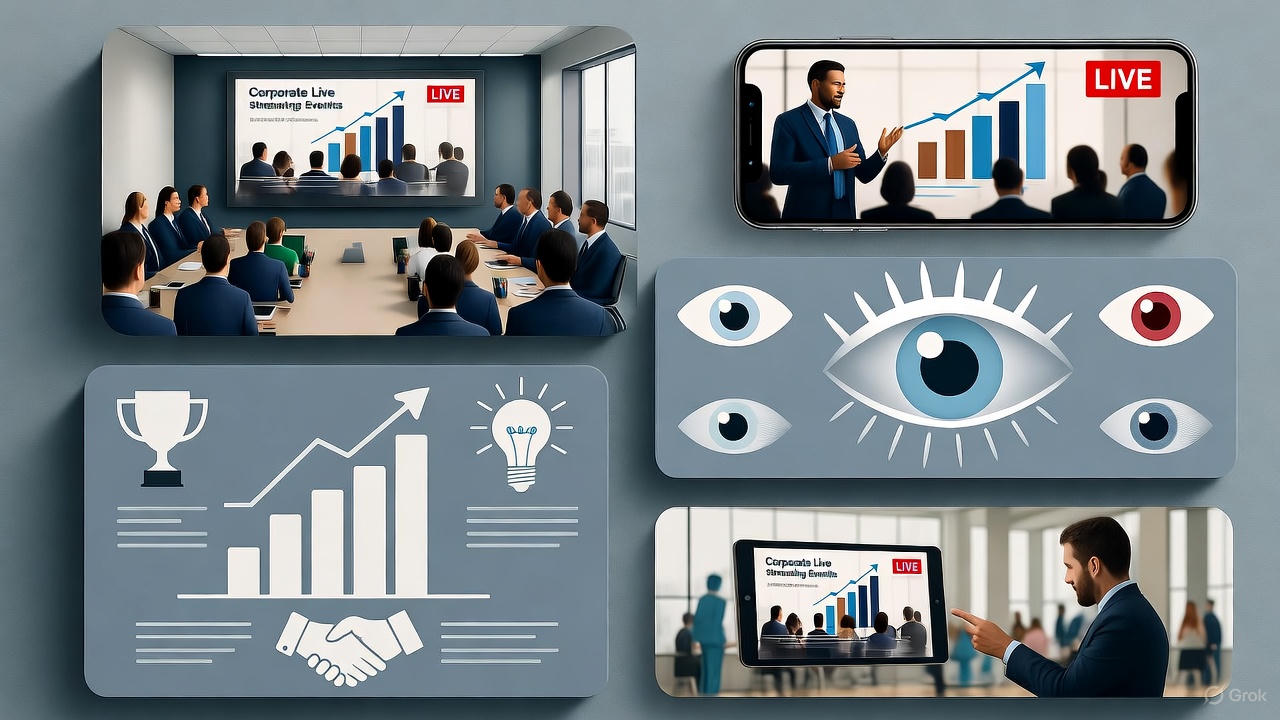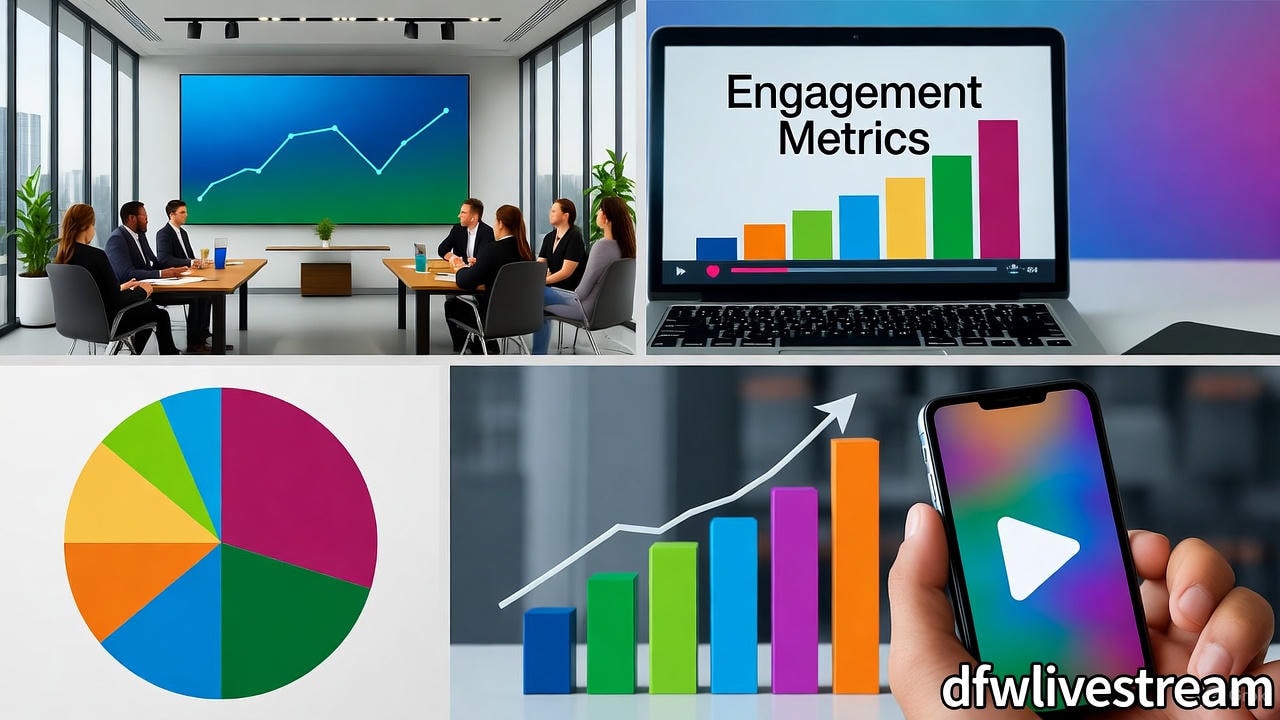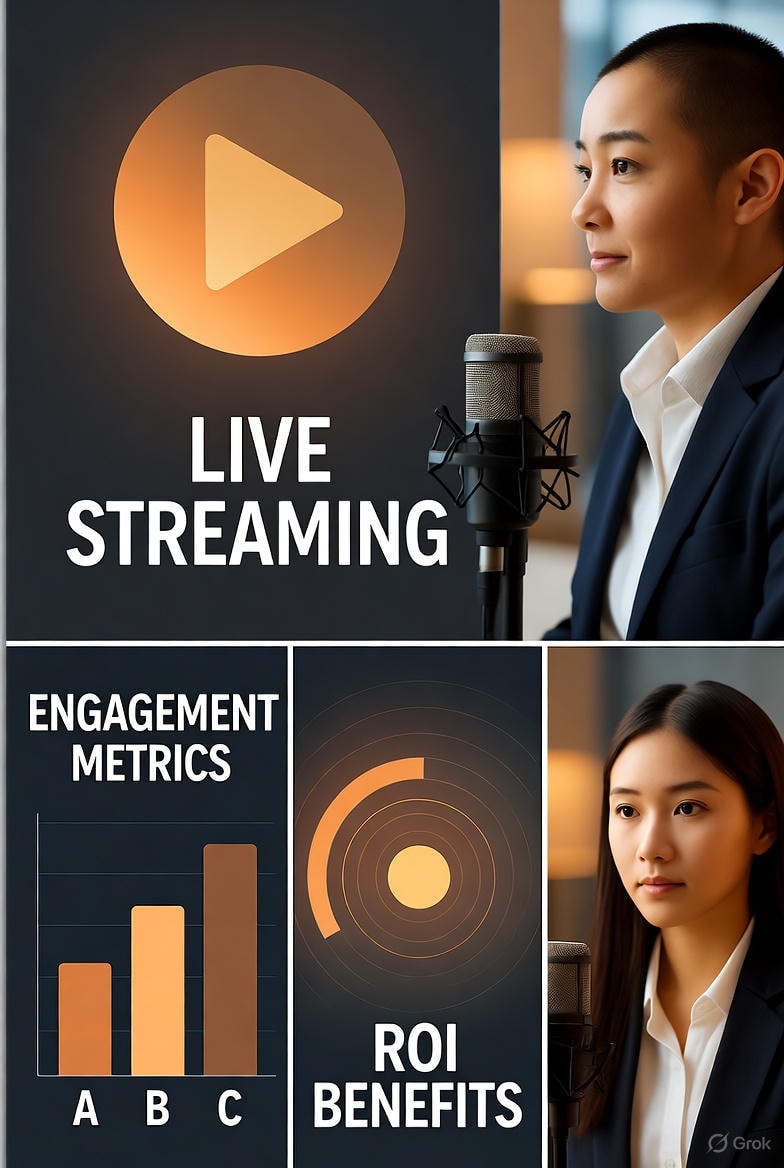
When it comes to corporate live streaming, most companies measure success by one number — view count. It’s the first metric that shows up after the broadcast, and it’s easy to screenshot and share in a post-event report. But here’s the truth: view counts don’t tell the whole story. Total views, while useful, only provide a surface-level understanding of audience behavior and engagement.
Before your event, it’s essential to define clear live streaming goals to measure ROI effectively and guide your strategy.
In today’s world of hybrid meetings and digital events, real ROI comes from engagement — how your audience interacts, responds, and takes action after the stream ends. In person events traditionally measured success through attendance and face-to-face networking, but the shift to virtual events has changed how companies approach ROI, focusing more on digital engagement and actionable data. Tracking an event’s ROI and business impact is especially crucial for justifying the value of a virtual event and informing future decisions. To measure ROI effectively, companies must define their goals and track metrics like unique viewers, average watch time, chat participation, leads or sales directly attributed to the stream, and opportunities to generate leads. It’s also important to assess the event's outcomes and overall business impact to demonstrate its value.
At DFW Live Stream, we’ve seen firsthand that a smaller, more engaged audience can often create far greater impact than a massive viewership that barely pays attention. Virtual events require careful planning and the use of marketing materials to maximize engagement and ROI.

Let’s say you stream your company’s quarterly town hall to 2,000 employees. The number of viewers and concurrent viewers may look impressive, but if engagement levels are low, audience participation is limited, and the audience’s interest isn’t captured, the event may not achieve its goals. Low engagement is a key issue here—if the audience's interest is not maintained, viewers may not stay invested. Half join late, many watch passively, and a large percentage drop off before the Q&A. It looks great on paper — but did it actually connect? Peak views, which reflect the highest number of concurrent viewers during the stream, can provide additional context but still don’t tell the full story.
Now imagine another event — only 800 viewers — but this time the chat is active, polls are answered, and employees stay through the entire session. The session is engaging, with interactive elements that keep viewers involved. High viewer engagement, active streams, and increased audience participation lead to more valuable insights. Post-event feedback triples, and leaders receive actionable insights they can use.
That second event created real engagement — and that’s where the value of live streaming shines. Using strategies like live polls, Q&A, and quizzes can significantly increase engagement and help maintain the audience's interest throughout the event.
At DFW Live Stream, we’ve seen clients with “lower” view counts walk away with 3x more internal participation and stronger follow-up engagement, because they focused on the right metrics. Tracking who is watching in real time, how many people watched the streams, and analyzing views across different audiences provides a clearer picture of the event’s impact.
To truly measure live streaming success, focus on key metrics and streaming metrics that go beyond simple attendance—track engagement, technical performance, and audience feedback to get a complete picture of your event’s impact. These metrics help measure the success of your live streaming efforts and guide future improvements.
Here are the KPIs that tell a clearer story:

Metric tells and metric measures help you understand what each data point reveals about your event’s success, from engagement to lead generation.
Tracking average time watched and analyzing viewer behavior are essential metrics to track, as they inform your content strategy and help improve future broadcasts. Monitoring audience engagement, including social sharing and social media mentions, is crucial for measuring reach and boosting engagement.
Incorporating interactive elements like polls and quizzes increases engagement and makes your event highly interactive. Monitoring technical performance, technical issues, and the overall viewer experience ensures a smooth live broadcast for the entire live stream by reducing interruptions and keeping audiences engaged. Password protection is important for securing your streams and ensuring only intended viewers have access. Real-time data helps resolve issues before they impact the audience, ensuring a seamless experience for all participants.
Analyzing the geographic location of unique users allows you to tailor content and marketing strategies for different regions. Tracking purchasing decisions, generating quality leads, and measuring the success of your event are vital for understanding the long-term value of your corporate live streams.
These data points don’t just measure attendance — they measure connection, and connection is what drives real results.
It’s not enough to gather numbers; you have to know what they mean. Platforms like YouTube Live, Vimeo, and custom RTMP players all offer valuable insights on audience retention and participation.
At DFW Live Stream, we go a step further. After each corporate event, we summarize Q&A logs, chat activity, and engagement patterns, so companies can clearly see what resonated most with their teams. Audience feedback collected during the event provides qualitative insights that help improve future broadcasts by tailoring content and engagement strategies to viewer preferences.
This turns your live stream into a learning tool — not just a broadcast. You can see which moments sparked discussion, what topics captured attention, and where communication can improve next time. By leveraging analytics and feedback, you can plan your next stream more effectively and optimize future broadcasts for even greater success.
Here’s where engagement becomes tangible ROI:
Your investment in professional live streaming isn’t just about one great event. By analyzing engagement data and repurposing content, you can maximize the long term value of your live streaming investment. It’s about building a culture of communication and connection that lasts long after the cameras stop rolling.
Live streaming isn’t just about broadcasting your message — it’s about understanding how your audience connects with it. The more you measure and learn, the more valuable every stream becomes.